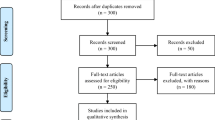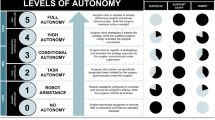Abstract
Objective
The objective for this study was to address the lack of information regarding the working conditions in the operating room (OR). Safety issues in the OR need to be discussed not only for the sake of patients, but also for personnel, as hazards may occur for all persons within the OR.
Methods
To evaluate the workplace conditions in the operating room, a survey was conducted among surgeons working in German hospitals. Sixty questions were asked regarding the personal profile, the architectural situation, the devices and instruments as well as working posture and associated pain.
Results
The survey showed elementary ergonomic deficiencies within all fields. Surgeons stated that these deficiencies lead to potential hazards for patients and personnel, potentially on a frequent basis. 97% of the surveyed surgeons see ergonomic improvement in the operating room as necessary.
Conclusion
The survey results display a high potential for improvement within all fields. Therefore, industry, surgeons and their professional organizations are asked to work on the optimization of the workplace conditions in the operating room in terms of improvement of quality and efficiency.





Similar content being viewed by others
References
Association for the Advancement of Medical Instrumentation Human Factors Engineering Committee (2001) Human factors design process for medical devices. ANSI/AAMI HE-74, Arlington
Berguer R, Forkey DL, Smith WD (1999) Ergonomic problems associated with laparoscopic surgery. Surg Endosc 13:466–468
International Electrotechnical Commission (2004) Medical electrical equipment – Part 1–6: General requirements for safety – Collateral standard: Usability (EN 60601–1–6). Beuth Verlag, Berlin
The Federal Health Monitoring System (2004) http://www.gbe-bund.de. Cited 12 Dec 2004
Kohn LT, Corrigan JM, Donaldson MS (eds) (2000) To err is human - building a safer health system. Committee on quality of health care in America, Institute of medicine. National Academy, Washington, D.C.
Matern U, Faist M, Kehl K, Giebmeyer C, Buess G (2005) Monitor position in laparoscopic surgery. Surg Endosc 19:436–440
Patkin M (2003) What surgeons want in operating rooms. Minim Invasive Ther Allied Technol 12:256–262
van Veelen MA, Nederlof EAL, Goossens RHM, Schot CJ, Jakimowicz JJ (2003) Ergonomic problems encountered by the medical team related to products used in minimally invasive surgery. Surg Endosc 17:1077–1081
van Veelen MA, Jakimowicz JJ, Goossens RHM, Meijer DW, Bussmann JBJ (2002) Evaluation of the usability of two types of image display systems during laparoscopy. Surg Endosc 16:674–678
Wauben LS, van Veelen MS, Gossot D, Goossens RH (2006) Application of ergonomic guidelines during minimally invasive surgery: a questionnaire of 284 surgeons. Surg Endosc 20:1268–1274
Author information
Authors and Affiliations
Corresponding author
Rights and permissions
About this article
Cite this article
Matern, U., Koneczny, S. Safety, hazards and ergonomics in the operating room. Surg Endosc 21, 1965–1969 (2007). https://doi.org/10.1007/s00464-007-9396-4
Received:
Revised:
Accepted:
Published:
Issue Date:
DOI: https://doi.org/10.1007/s00464-007-9396-4




